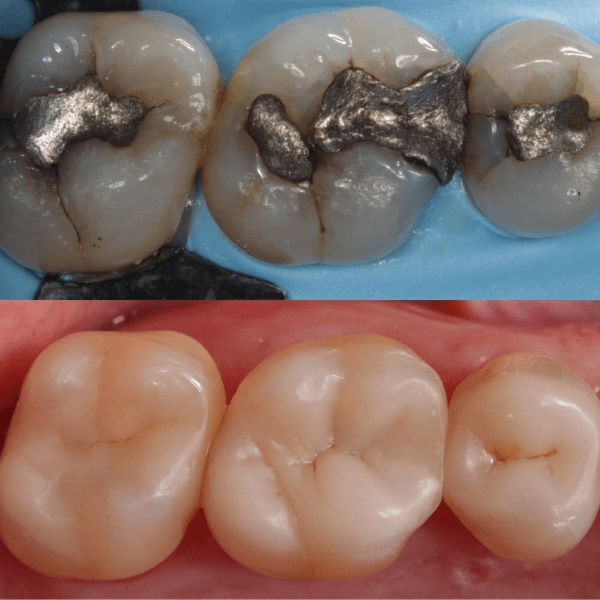Tooth Coloured Fillings
Composite fillings are also called white fillings. Your dentist cleans all decay from the tooth and puts a glue (or bonding material) on the inside of the hole. Composite resin is put into the hole in thin layers. Each layer gets hard with the help of a special light that your dentist holds over the tooth. When the last layer of the filling is hard, your dentist shapes the filling so it looks and feels natural.
Advantages
- These fillings will be the same colour as your natural teeth.
- They cost less than gold fillings.
- They have better aesthetics than amalgam (silver) fillings
- They are direct fillings, so they can be done in one appointment, in most cases.
Disadvantages
- This kind of filling can break more easily than amalgam or gold fillings, and may not last as long.In cases where large composite fillings are placed or the tooth has had root canal treatment a crown may be recommended by your dentist to structurally strengthen the tooth by placing a ceramic crown


